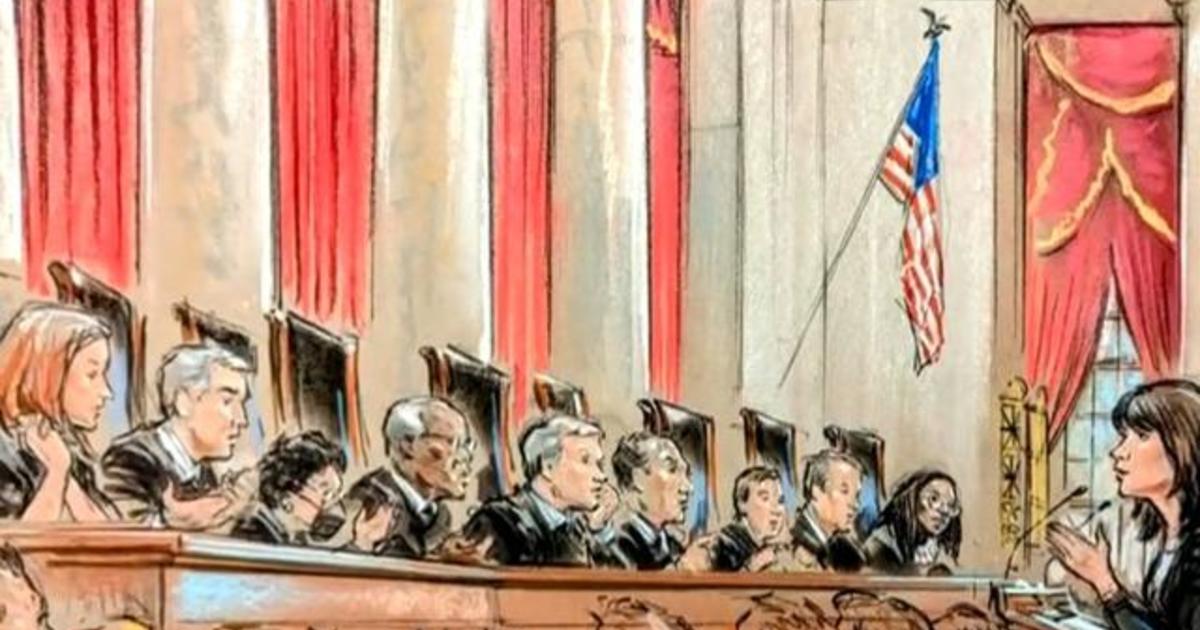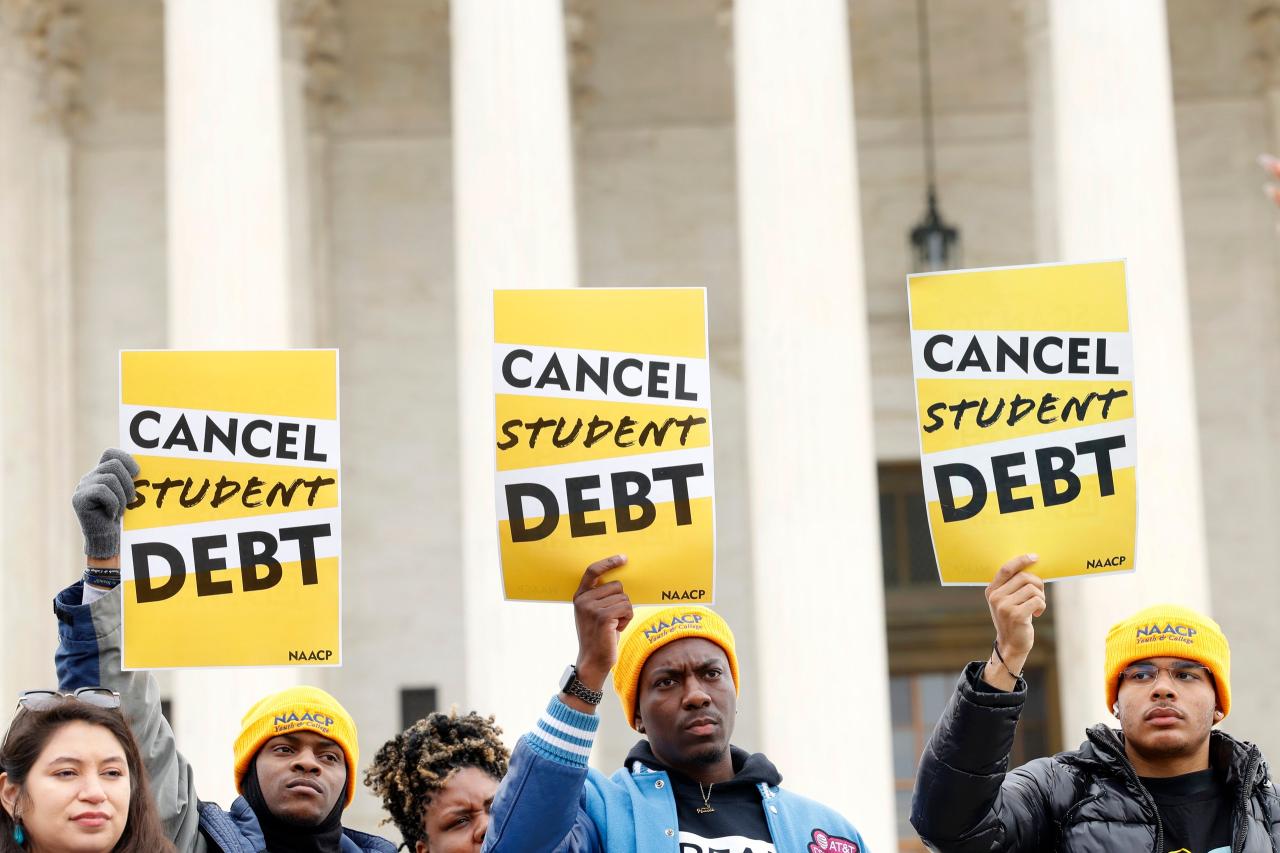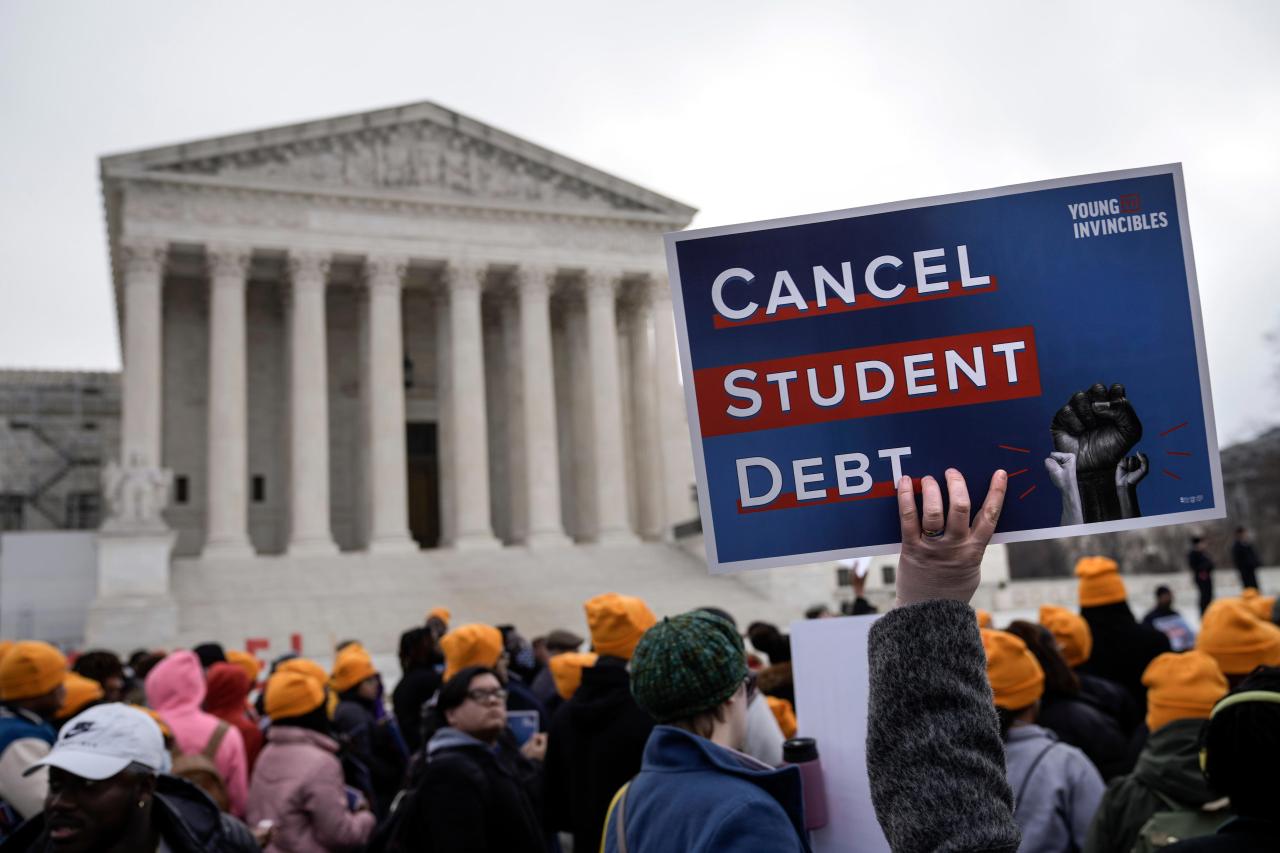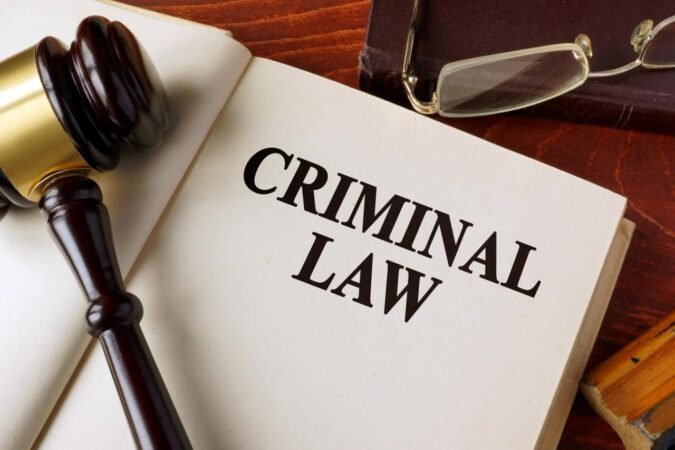
Legal Authority

The Supreme Court has the authority to rule on student loan forgiveness based on its power to interpret the law and determine the constitutionality of government actions.
Relevant laws and precedents include the Higher Education Act of 1965, which gives the Secretary of Education broad authority to manage federal student loan programs, and the Administrative Procedure Act, which allows courts to review agency actions for abuse of discretion or other legal errors.
Limits of Court Authority
The Court’s authority is limited by the separation of powers doctrine, which prevents it from encroaching on the powers of the executive and legislative branches. Additionally, the Court generally defers to the expertise of administrative agencies, such as the Department of Education, in interpreting and implementing laws within their areas of expertise.
Standing
Standing is a legal concept that determines whether a party has the right to bring a lawsuit before a court. In the context of loan forgiveness, standing is relevant because it determines who can challenge or support the program in court.
To have standing, a party must show that they have suffered a concrete and particularized injury in fact that is fairly traceable to the challenged action and is likely to be redressed by a favorable decision.
Parties with Standing
The parties with standing to challenge or support the loan forgiveness program include:
- Borrowers who have been denied loan forgiveness
- Taxpayers who allege that the program is unconstitutional or otherwise illegal
- Lenders who claim that the program will harm their business
- Government agencies that are responsible for administering the program
Potential Legal Arguments
The potential legal arguments for and against standing in the context of loan forgiveness include:
- Arguments for standing:
- Borrowers who have been denied loan forgiveness have suffered a concrete injury in fact.
- Taxpayers have a right to challenge government spending programs that they believe are unconstitutional or otherwise illegal.
- Lenders have a right to protect their business interests from government programs that they believe will harm them.
- Arguments against standing:
- Borrowers who have not been denied loan forgiveness do not have standing to challenge the program.
- Taxpayers do not have standing to challenge government spending programs simply because they disagree with them.
- Lenders do not have standing to challenge government programs that they believe will harm them unless they can show that they have suffered a concrete injury in fact.
Separation of Powers

The principle of separation of powers divides the government into three branches: executive, legislative, and judicial. This separation aims to prevent any one branch from becoming too powerful and ensures checks and balances among them.
In the context of loan forgiveness, the executive branch, led by the President, has the authority to propose and implement policies. The legislative branch, consisting of Congress, has the power to make laws and appropriate funds. The judicial branch, comprising the Supreme Court and lower courts, interprets laws and ensures their constitutionality.
Executive Branch
The President has the authority to grant pardons for federal crimes. However, loan forgiveness is not considered a pardon, as it does not erase criminal convictions. Additionally, the President cannot unilaterally forgive federal student loans without congressional approval.
Legislative Branch
Congress has the power to make laws, including those related to student loans. It can pass legislation that authorizes the President or the Department of Education to forgive student loans. Congress also has the power to appropriate funds for loan forgiveness programs.
Judicial Branch
The Supreme Court has the power to interpret laws and determine their constitutionality. If Congress passes a law authorizing loan forgiveness, the Supreme Court could review the law to ensure it does not violate the Constitution.
Potential Conflicts
Conflicts between branches can arise when one branch oversteps its authority or encroaches on the powers of another branch. For example, if the President attempts to forgive student loans without congressional approval, Congress could challenge this action in court.
Fiscal Impact

Student loan forgiveness has the potential to significantly impact the federal budget and the economy as a whole. Estimating the precise cost of loan forgiveness is challenging due to various factors, including the specific parameters of the forgiveness program and economic uncertainties.
One study by the Congressional Budget Office (CBO) estimated that forgiving all federal student loans would cost taxpayers approximately $1.6 trillion over the next decade. However, the actual cost could vary depending on the eligibility criteria, income limits, and other factors.
Economic Consequences
Forgiving student loans could have several economic consequences. Some argue that it would stimulate the economy by increasing consumer spending and reducing household debt. Others contend that it could lead to inflation, as the government would need to borrow more money to cover the cost of forgiveness.
The economic impact of loan forgiveness would likely depend on the specific design of the program and the overall economic climate at the time of implementation.
Comparison to Other Government Spending Programs
The potential cost of student loan forgiveness is comparable to other major government spending programs. For example, the CBO estimated that the annual cost of Social Security benefits is approximately $1.2 trillion.
However, it is important to note that student loan forgiveness would be a one-time expense, while Social Security benefits are an ongoing obligation. Additionally, the benefits of student loan forgiveness would be concentrated among a specific group of individuals, while Social Security benefits are distributed more broadly.
Equity and Fairness
Loan forgiveness proponents argue that it promotes equity and fairness by alleviating the disproportionate burden of student debt on marginalized communities. They point out that Black and Hispanic borrowers are more likely to default on their student loans than White borrowers, and that women hold a majority of the nation’s student debt.
Opponents, on the other hand, contend that loan forgiveness is unfair to those who have already repaid their student loans or who chose not to attend college due to the cost. They also argue that it would be expensive and could lead to inflation.
Impact on Different Socioeconomic Groups
Loan forgiveness would have a significant impact on different socioeconomic groups. A study by the Brookings Institution found that the bottom 20% of income earners would receive an average of $18,000 in loan forgiveness, while the top 20% of income earners would receive an average of $65,000.
Potential for Unintended Consequences
There is also the potential for unintended consequences from loan forgiveness. For example, it could lead to colleges raising tuition prices, knowing that the government will ultimately forgive the loans. It could also lead to a decrease in the number of people attending college, as they may no longer see the need to invest in a degree that they can get for free.
Alternative Solutions
While loan forgiveness is a direct and effective solution, it is not the only option for addressing the student loan debt crisis. Other alternatives offer varying degrees of relief and have their own set of advantages and disadvantages.
One alternative is to reduce interest rates on student loans. This would lower the overall cost of borrowing and make it easier for borrowers to repay their loans. However, it would not provide immediate relief to borrowers who are already struggling to make payments.
Another alternative is to extend the repayment period for student loans. This would give borrowers more time to repay their loans, reducing their monthly payments. However, it would also increase the total amount of interest paid over the life of the loan.
A third alternative is to create an income-driven repayment plan for student loans. This type of plan would cap monthly payments at a percentage of the borrower’s income. This would make it easier for borrowers to repay their loans while still meeting their other financial obligations.
Each of these alternatives has its own advantages and disadvantages. Loan forgiveness would provide the most immediate relief to borrowers, but it would also be the most expensive option. Reducing interest rates or extending the repayment period would provide less immediate relief, but it would be less expensive. Creating an income-driven repayment plan would provide the most flexibility for borrowers, but it would also be the most complex to implement.
Feasibility and Effectiveness
The feasibility and effectiveness of each alternative depends on a number of factors, including the political climate, the state of the economy, and the willingness of lenders to cooperate. Loan forgiveness would likely face the most political opposition, as it would require a significant investment of taxpayer money. Reducing interest rates or extending the repayment period would be more feasible, but it would still require action from Congress. Creating an income-driven repayment plan would be the most feasible, as it could be implemented by the Department of Education without congressional approval.
The effectiveness of each alternative would also depend on a number of factors, including the size of the loan forgiveness program, the interest rate reduction, the length of the repayment extension, and the income thresholds for an income-driven repayment plan. Loan forgiveness would be the most effective at reducing the overall burden of student loan debt, but it would also be the most expensive. Reducing interest rates or extending the repayment period would be less effective, but it would also be less expensive. Creating an income-driven repayment plan would be the most effective at helping borrowers who are struggling to make payments, but it would also be the most complex to implement.





